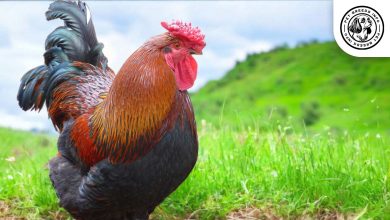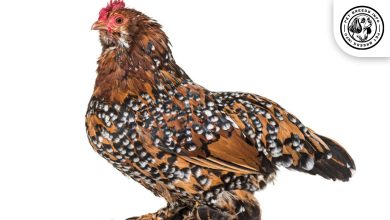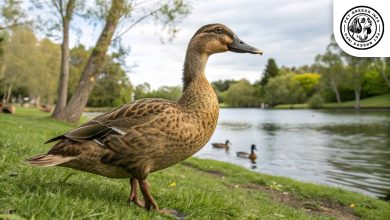White Crested Duck breed: Personality, Lifespan, Food & Care
General Introduction of the Breed
The White Crested Duck, also known as simply the Crested Duck, is a domesticated duck breed primarily raised for ornamental purposes. It is recognized for the distinctive crest of feathers on its head. It is believed to have originated in Southeast Asia or Europe, with early records dating back to the 1600s. The breed was further refined in Europe and the United States.
Table of Contents
| Common Name | White Crested Duck |
| Scientific Name | Anas platyrhynchos domesticus |
| Origin | Southeast Asia or Europe |
| Size | 6–7 lbs (2.7–3.2 kg) |
| Lifespan | 8 to 12 years |
| Egg Color | White to light cream |
| Egg Production | ~100–130 eggs/year |
| Temperament | Calm, friendly, playful |
| Cold-Hardy | Moderately; needs shelter in extreme cold |
Physical Characteristics
The White Crested Duck is a medium-sized duck with an average weight of 6 to 7 pounds (2.7 to 3.2 kg). Males tend to be slightly larger than females. This breed is particularly known for its fluffy crest on the top of the head, which is caused by a genetic mutation.
They have a soft, white plumage that covers their entire body. Their eyes are round and dark, often appearing glossy. The bill is typically orange or yellow, while the legs and feet are bright orange. The wings are well-developed, but due to domestic breeding, these ducks are not strong fliers.
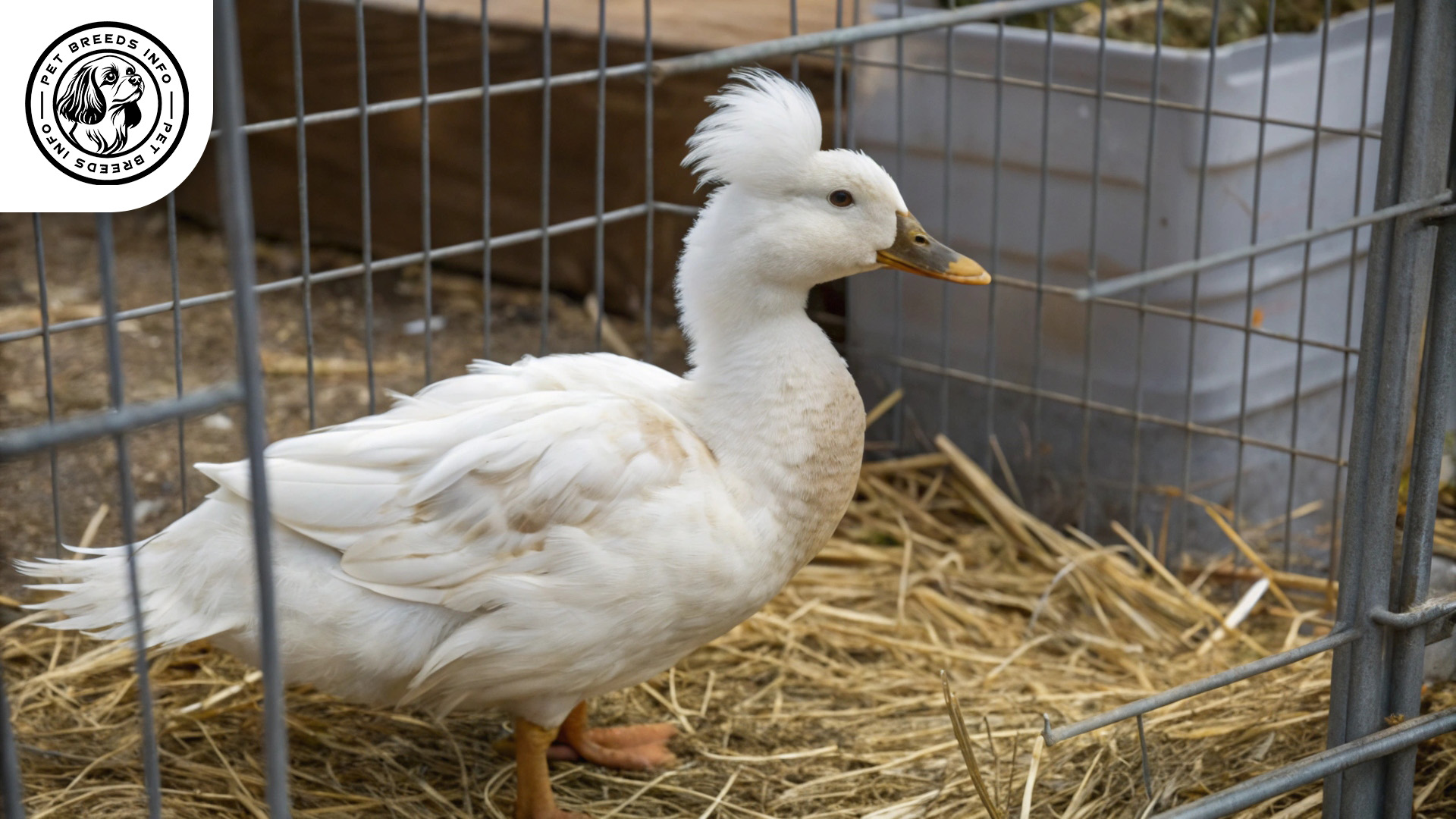
Personality and Temperament
The White Crested Duck is known for its calm and docile nature. It is friendly and can form strong bonds with its owners when raised in an interactive environment. Owners often find these ducks to be entertaining due to their playful personalities.
They have moderate energy levels and enjoy foraging around their environment. They are generally sociable with other ducks and can cohabit with other poultry species. However, due to their friendly and trusting nature, they should be kept safe from predators.
Read More: Pekin Duck Bird
Care and Maintenance Requirements
White Crested Ducks require a safe and spacious environment where they can roam freely. They thrive best in areas that have access to a pond or water source, as they enjoy swimming and foraging.
Grooming these ducks is relatively simple. Their feathers should remain clean and free from excessive dirt, though they usually preen themselves. Proper water access helps them maintain their plumage. Their crest requires special attention to avoid injuries or infections. Regularly checking for lice or mites is recommended.
Despite being adaptable, they can be sensitive to extreme cold. Providing shelter during harsh weather conditions is necessary to keep them comfortable and healthy.
Diet and Nutrition
White Crested Ducks require a balanced diet of formulated duck feed supplemented with fresh vegetables and grains. Providing nutritional pellets ensures they receive essential vitamins and minerals.
They may also eat insects, snails, and other small invertebrates while foraging. Foods to avoid include chocolate, processed foods, and anything high in salt or sugar. Water should always be available, as ducks need to dip their food in water for proper digestion.
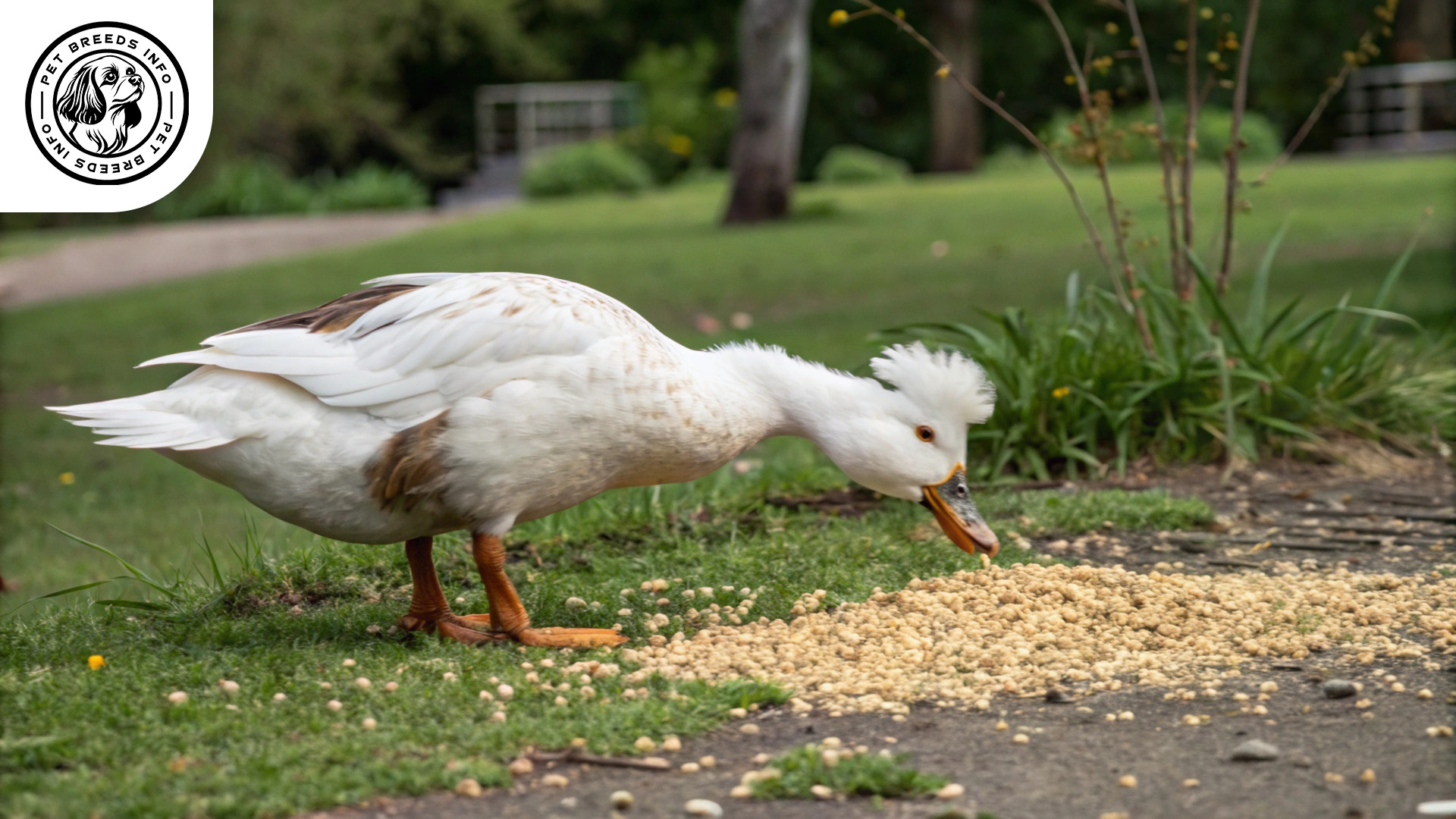
Health and Common Medical Issues
The White Crested Duck, while generally healthy, has a genetic predisposition to certain health problems due to its crest. The crest is formed by a skull malformation, which can sometimes lead to neurological issues or hatchling mortality.
Proper care and a nutritious diet help minimize health risks. Regular veterinary checkups ensure early detection of infections or other health complications. Vaccinations may be required depending on regional regulations.
Read More: Peach-faced Lovebird
Training and Behavior Management
These ducks are relatively easy to train when handled from a young age. Positive reinforcement and food rewards work well when training them to follow routines or recognize their names.
It is important to provide early socialization to help them get accustomed to human interaction. Consistency in feeding and handling schedules improves their responsiveness.
Interaction with Other Animals and Humans
White Crested Ducks are affectionate and social birds that enjoy being around other ducks. They can coexist with other poultry, such as chickens, provided they have ample space.
They are gentle around children but should be handled with care. Their trusting nature makes them vulnerable to aggressive pets, so supervision is necessary when they are around cats, dogs, or other animals.
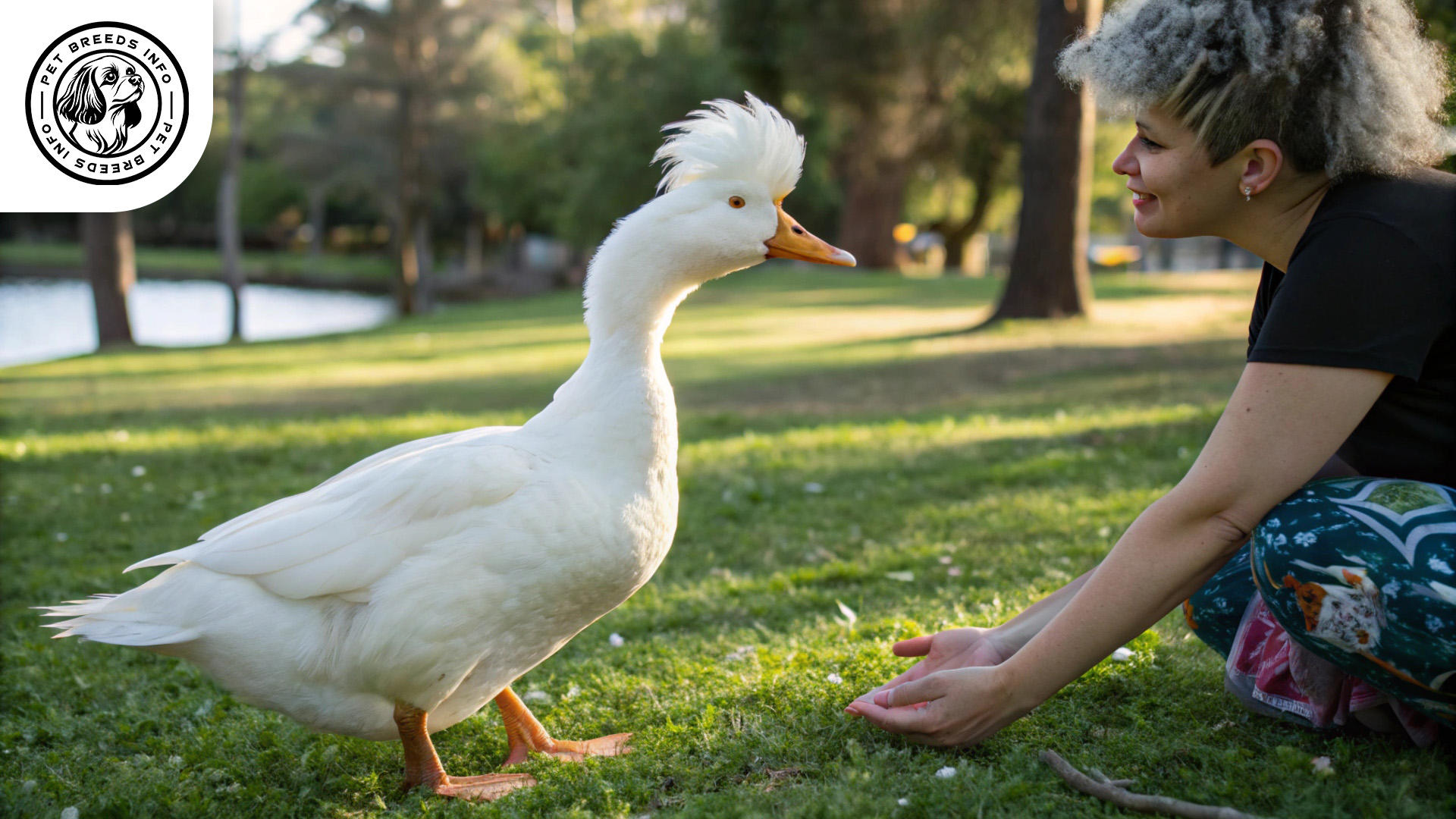
Price and Availability
The cost of a White Crested Duck varies depending on the breeder and location. On average, they are priced between $10 and $30 per duck. Ducklings may be more affordable, while adult ducks in good health may cost slightly more.
It is essential to purchase from reputable breeders or farms that focus on ethical breeding practices. Adoption centers and poultry farms may also have White Crested Ducks available.
Read More: Black-capped Lory Bird
Conclusion and Final Thoughts
The White Crested Duck is an excellent choice for both novice and experienced poultry enthusiasts. They are easy to care for, friendly, and visually unique. Their moderate upkeep makes them a great addition to farms or backyard settings.
Potential owners should consider the duck’s need for companionship, access to water, and a safe environment before committing. With proper care and attention, these ducks can be entertaining and low-maintenance companion birds.
FAQ
Do White Crested Ducks need special care for their crest?
Yes, their crest should be monitored regularly for injury or infection due to its delicate nature.
Can they live with other animals?
They can live peacefully with chickens and other ducks if given adequate space and supervision.
Are White Crested Ducks good for beginners?
Definitely! Their friendly and docile nature makes them suitable for novice duck keepers.
Do they require a pond?
They love water, but a kiddie pool or small pond is enough to keep them happy and clean.
Is the crest harmful to the duck’s health?
It’s mostly harmless, but because it’s a result of a skull defect, it can occasionally lead to health issues.

